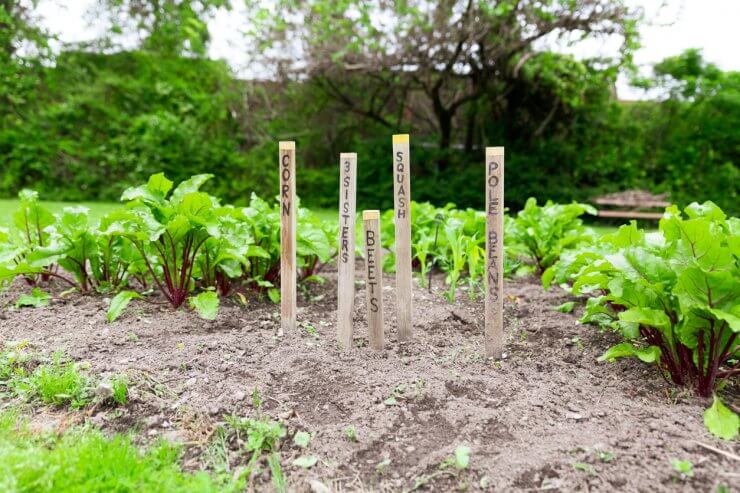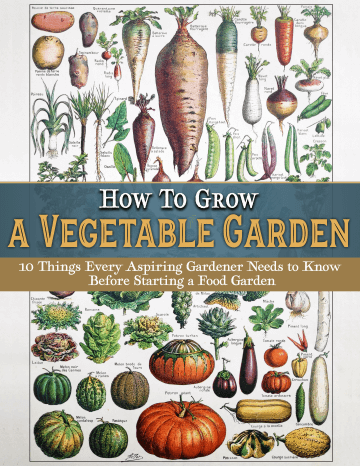
Some things are meant to be together: wine and cheese, peanut butter and jelly, Simon and Garfunkel, and the three sisters. The three sisters, otherwise known as corn, beans, and squash, are three of the best vegetables to plant together. There is evidence that indigenous people of what is now Mexico and the southwestern United States were planting these three crops together thousands of years ago.
Why those three? And what else goes together? The tall corn stalks give beans a pole to climb, and the leaves of the corn plant shade the squash. The beans provide nitrogen for the corn and squash, while the large leaves of the squash help the ground retain moisture. The three also create a nutritional balance of carbohydrates, protein, and vitamins.
Those aren’t the only plants that go well together, though. Whether you’re looking for flavor combos, pest protection, or environmental advantages, here are some of the best vegetables to plant together.
Discover 10 top tips for growing, harvesting, and enjoying fruits, vegetables, herbs and more from your home garden—when you access the FREEBIE How to Grow a Vegetable Garden, right now!
18 of the best vegetables to plant together for tasty results
Companion planting has a variety of benefits. The three sisters are a good example of the environmental benefits of growing particular plants together. But some, like tomatoes and basil, have benefits like pest reduction. The aroma of basil deters some of the insects that feed on tomato plants, and some gardeners also believe that basil lends some additional flavor to tomatoes. What are some more of the best vegetables to plant together?
The best vegetables to plant together to deter pests
- Onions and carrots. Not only do they make a great base for soup, but the carrot fly and aphids don’t like the smell of onions.
- Radishes and cucumbers. Radishes repel the cucumber beetle, plus radishes grow quickly.
- Cabbage and nasturtium. Admittedly, nasturtium isn’t a vegetable, but it is a delicious edible flower, and it helps keep bugs, beetles, and aphids away from the cabbage.
The best vegetables to plant together for environmental benefits
- Tomatoes and carrots. Carrots enjoy the shade of the tomato plant, while the tomato benefits from the way carrots grow and allow air and water to get to the tomato’s roots.
- Beets and garlic. This one is really a powerhouse combo. The smell of the garlic repels beetles, snails, and other pests, and also improves the flavor of the beets. Environmentally, though, garlic produces sulfur that helps prevent disease in beets thanks to garlic’s antifungal properties.
- Broccoli and salad greens. Lettuce, spinach, and other leafy greens need shade or they will wilt in the hot, direct sunlight. The large leaves of the broccoli plant provide a perfect amount of shade to help the more delicate greens thrive.
The best vegetables to plant together for flavor
- Peas and mint. Yes, mint is an herb and not a vegetable, but you can’t deny the benefits. Mint not only adds a nice flavor to peas, but a lot of pests avoid mint.
- Onion and chamomile. Not only does chamomile improve the flavor of onions, but you get the bonus of free chamomile tea!
- Tarragon and… everything? Most pests steer clear of tarragon and some gardeners swear it improves the flavor of pretty much anything that grows near it.
This is just a small sampling of some of the best herbs and best vegetables to plant together. There are plenty more, depending on how much room you have in your garden or how much you want to mix herbs and vegetables. For the most part, though, strategic companion planting can nearly eliminate pests and give you healthy, abundant crops without too much worry.
What are some of the best vegetables you’ve planted together? I’d love to read about your experience in the comments section.
Discover 10 top tips for growing, harvesting, and enjoying fruits, vegetables, herbs and more from your home garden—when you access the FREEBIE How to Grow a Vegetable Garden, right now!





Great information .